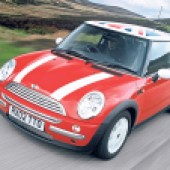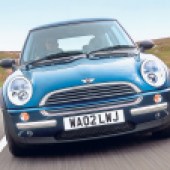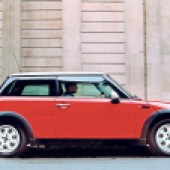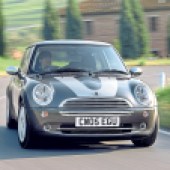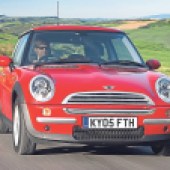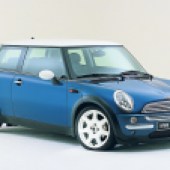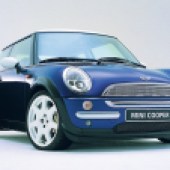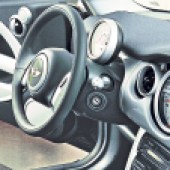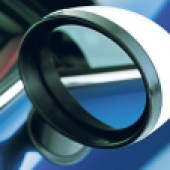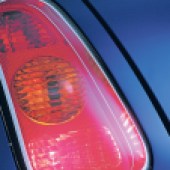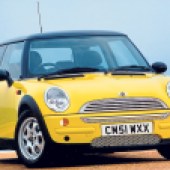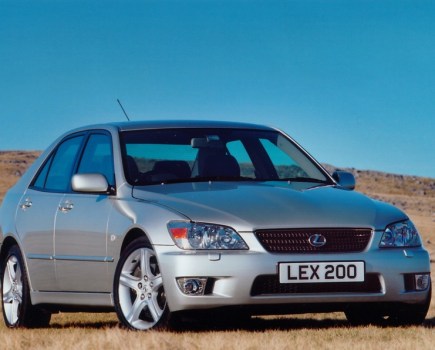With retro styling and a great driving experience, the R50 MINI was a hit and is now popular as a modern classic. Here’s how to buy the best
Sponsored editorial in association with Lancaster Insurance
During the classic Mini’s 41-year production run, the big questions often centred on what would succeed Alex Issigonis’ legendary original design. Issigonis himself dabbled with the 9X project in the late 1960s, and British Leyland also experimented with the ADO74 and ADO88, which eventually led to the Metro. After that, things went quiet. The Mini drifted through a slow period in the 1980s but regained its cool status in the 1990s, thanks to the Japanese market and the revived Mini Cooper. When BMW acquired Rover in 1994, it clearly recognised the Mini as a priceless brand and was determined to revitalise it.
BMW’s chief Bernd Pischetsrieder quickly urged his British design team to begin exploring new ideas, and Rover started serious work on a new Mini. Simultaneously, BMW’s Munich-based team, led by American-born Frank Stephenson, was also developing designs.
The two teams faced off in 1995 with presentations. Rover’s initial concept, called ‘Spiritual’, was a radical design featuring an engine mounted under the rear seats, powering the rear wheels. Rover envisioned this as the first in a new range and also revealed a larger version named ‘Spiritual Too’. BMW’s concepts were closer to the final design, but Rover spent much of the winter refining its ideas. In 1996, BMW decided to discard Rover’s work entirely, favouring Stephenson’s design but assigning the engineering to Rover. What began as the E50 project then became the R50, with ‘R’ standing for Rover.
The rejected Spiritual and Spiritual Too designs surfaced in 1997, but only through controlled leaks intended to stir public interest in the next-generation Mini. Another distraction came when BMW marked the 30th anniversary of the Mini’s final Monte Carlo Rally victory by commissioning a two-seater concept car, the ACV30—‘ACV’ standing for Anniversary Concept Vehicle.
In September that year, the R50 was unveiled at the Frankfurt Motor Show. It was almost a hoax, as the model shown was only a ‘skin prototype’, built on a modified Fiat Punto platform with Punto running gear, engine, and gearbox.
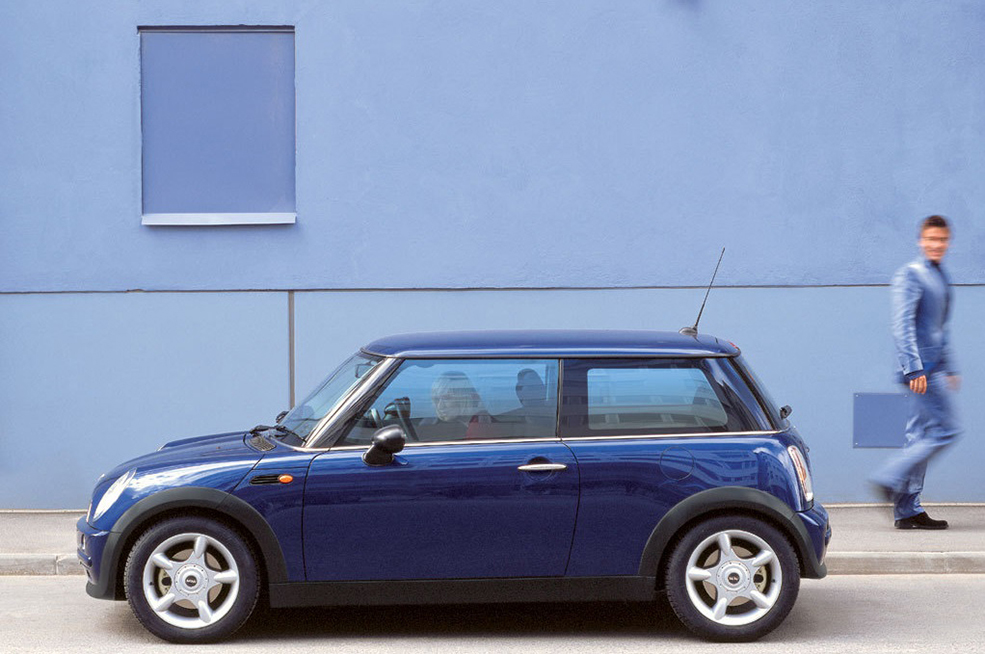
Production models would be powered by a brand-new Chrysler engine, a joint venture between BMW and Chrysler after BMW abandoned plans for its own new unit, and rejected the bulky K-Series. The W10 ‘Tritec’ engine was a 16-valve single overhead camshaft design, with proper prototypes hitting the road late in 1997. However, following Rover’s sale to the Phoenix consortium and BMW’s retention of the MINI brand, along with the move of production from Longbridge, Birmingham to Cowley, Oxford, it was almost another four years before the new MINI was officially revealed in production form.
The last classic Mini rolled off the Longbridge line on 4 October 2000, but it was not until 7 July 2001 that MINI dealerships opened within BMW retailers across the UK. Two R50 models were available initially: the 90bhp One and the 115bhp Cooper, both powered by the 1.6-litre Tritec engine. Buyers were drawn to the new MINI’s blend of cheeky yet respectful styling, solid build quality, impressive safety features, and low running costs, helped by the ‘TLC’ package covering all servicing for the first five years or 50,000 miles, transferable to the next owner. Supported by the memorable ‘It’s a MINI Adventure’ advertising campaign, demand was high, with waiting lists and strong residual values. Second-hand models often sold for more than new ones.
The Cooper stood out with sharp steering and playful handling, though its 115bhp output delivered warm rather than hot-hatch performance. A slightly quicker John Cooper Works (JCW) factory-approved conversion followed, but the true answer for speed came a year later with the range-topping Cooper S.
More significantly, the R53 Cooper S marked the brand’s return to the US market in March 2002. It featured an Eaton M45 supercharger and a robust Getrag six-speed manual gearbox mated to the 1.6-litre Tritec engine. Performance exceeded expectations, with 163bhp, a 0-60mph time of 7.2 seconds, and a top speed of 135mph.
In 2003, a frugal 74bhp 1.5-litre Toyota D-4D diesel One D joined the range, along with the highly anticipated official JCW tuning pack for the Cooper S, which boosted power to 200bhp, cut 0-62mph acceleration to 6.5 seconds, and raised top speed to 142mph.
July 2004 saw the arrival of R52 Convertible versions of the One, Cooper, and Cooper S, alongside a facelift for the entire range. Changes included new bumpers, updated trim and lighting, extra options, and a stronger, more reliable Getrag five-speed gearbox for the One and Cooper. Meanwhile, Cooper S power rose to 170bhp and an optional limited-slip differential was introduced. The JCW tuning pack’s power also climbed to 210bhp, marked by different injectors and a JCW airbox.
Final updates for the R50 MINI focused on the Cooper S, which gained a proper six-speed automatic in 2005, replacing the CVT auto used in other models. The One D also received a power boost to 88bhp but retained the pre-facelift bumpers.
Alongside special editions such as the One-based Seven, Cooper Park Lane, and Cooper S Checkmate in 2006, the first-generation New MINI’s swan song was the limited-edition two-seater GP. Weighing 50kg less, it featured a unique bodykit with ground effect aerodynamics, uprated JCW brakes, and distinctive four-spoke alloys. Finished in Thunder Blue with a Pure Silver roof, it was built by the renowned Italian coachbuilder Bertone. Priced at £22,000, it sold out before reaching dealers and has since become a sought-after collector’s item. Production of the R50 and R53 models ended in 2006, with 130,000 sold in the UK alone.
As an upmarket car, the R50 MINI was offered with a wide range of options, meaning very few cars were identical. The Salt and Pepper packs for the MINI One bundled many popular extras. The Salt pack included items that arguably should have been standard, such as floor mats, front fog lights, and a rev counter, while the £750 Pepper pack added alloy wheels and, from 2004, chrome bumper inserts.
The Cooper also came with the Pepper pack, but buyers could upgrade to the Chili pack, which offered more premium wheel and tyre choices. The Cooper S had its own version of the Chili pack, including xenon headlights and half-leather trim. Fully loaded, a Cooper S could easily top £25,000.
MINI R50 values
Insurance Costs
2003 MINI Cooper S Hatch, £3000 value.
Example quote: £294.50 or £312.50 with Agreed Value.Quotation supplied by Lancaster Insurance. Tel: 01480 400761
Quote based on a 45-year-old marketing manager, access to another car, no claims or convictions, club member, 3000 miles per year, no modifications, living in SP2 0HL. Disclaimer: Subject to underwriting criteria. An additional charge may be payable. Authorised and regulated by the Financial Conduct Authority.
Bodywork
Build quality and paintwork are generally sound, but it’s important to remember that the earliest R50 models are now over 20 years old. Look out for lacquer peeling on all panels and stone chips on the front bumper, bonnet, and windscreen. Replacement bumpers and even panels should be fairly easy to find if the car is in one of the more common colours like Pure Silver, Electric Blue, or Chili Red – though rarer shades may prove more difficult.
The doors and rear quarters are robust but still susceptible to parking dents, so give these areas a close inspection. Damage to the rear quarters can be especially tricky to repair – particularly around the rear light clusters. Also keep an eye out for poorly repaired crash damage elsewhere by checking panel gaps carefully all round. Scuffed or cracked plastic trim and kerb-damaged alloys are common faults as well.
Minor corrosion can occasionally appear, so be sure to check places like the bottoms of the doors, panel edges, and where the bumpers meet the bodywork. A thorough inspection underneath is worthwhile, as rust may affect the rear subframe and areas around the fuel tank. Overall, it’s about assessing the general condition and steering clear of cars that show signs of urban wear and tear such as scrapes and dents.
The paint can suffer from peeling lacquer, so factor in the cost of professional repair. Watch for signs of previous impacts too – misaligned panels and bumpers or paint colour mismatches are clear indicators. The condition of stripes and other graphics is worth checking as well, since some owners add custom decals that may not appeal to everyone. Exterior lights and mirrors might also have taken knocks over time, but this isn’t usually a major issue if the rest of the car is in good shape, especially given the good availability of used parts.
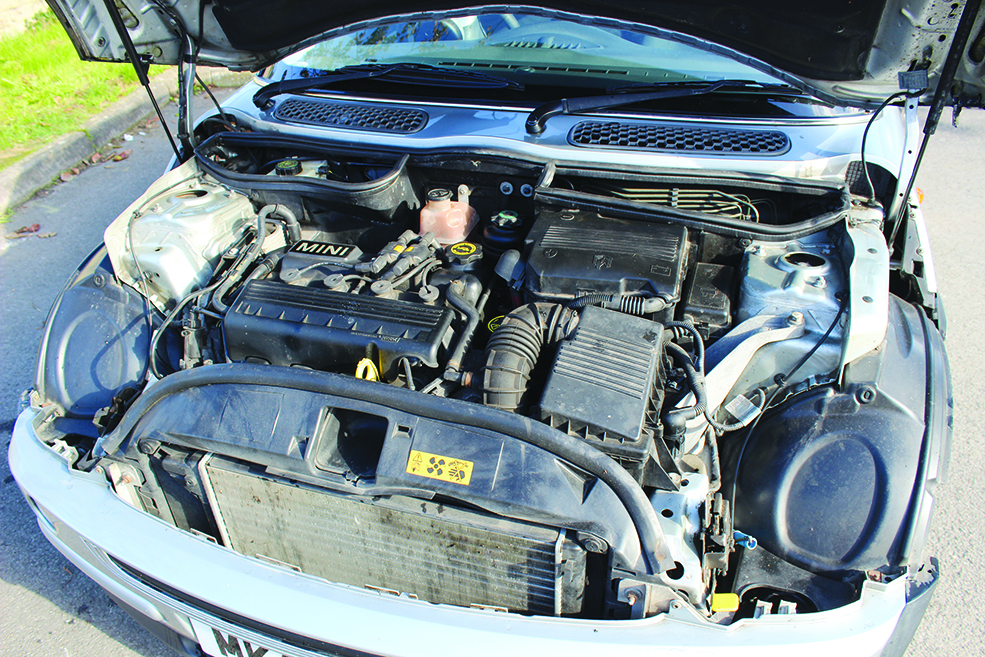
Engine and transmission
Engine mounts on the R50 MINI tend to wear out, so listen carefully for clunks and vibrations during the test drive. All versions use some oil, but if you’re considering a Cooper S, the supercharger means it usually consumes more – around 250ml per 1,000 miles is typical. Start the engine and listen for any unusual rattles from the top or bottom of the engine. If the noise comes from the top, it might indicate issues with the hydraulic tappets or timing chain tensioner. If it’s from the bottom, this is more serious and could mean an expensive rebuild is needed. It’s common for the dipstick to break on Cooper S models. If you find this, it’s best to walk away unless the price reflects this potential problem.
First-generation cars are also known for oil leaks. Usually, it’s a straightforward fix such as the crank sensor O-ring, but this requires putting the car into ‘front end service mode’ – meaning the front bumper and radiator must be removed. The sump gasket can also leak, which is a more complex job. Other typical failure points include the crank seal and the rear main oil seal. This seal sits around the crank behind the flywheel and often leaks oil over time, which can lead to premature clutch slipping. Spark plug seals and rocker cover gaskets may leak too, but these are simple to fix.
The Cooper S’s Eaton supercharger is generally reliable, but if the car has done 100,000 miles or more, it may benefit from a specialist rebuild. Models with uprated pulleys are more prone to wear. Leeds-based specialist Mad4Mini suggests servicing the Eaton supercharger between 80,000 and 100,000 miles. Good used superchargers cost around £250-£300 if replacement is necessary.
Other engine concerns with the Cooper S involve overheating, which can cause cracked cylinder heads. This is often due to cooling fans failing to engage. The thermostat can also cause issues on all models, either leaking as the seal ages or seizing completely, leading to overheating. While replacement is fiddly, it is manageable for a competent home mechanic.
For R50 One and Cooper models, check the condition of the exhaust back box as they are prone to rust and tend to peel back in layers like an onion. The standard Cooper S exhaust system can also corrode and is expensive to replace.
When driving a pre-facelift One or Cooper (2001–2004), ensure you test all five gears and that the changes are smooth. The Rover-derived R65 ‘Midland’ gearbox is fragile and a common weak point. Clutch failure is also frequent. CVT automatic versions have a reputation for problems and are best avoided. Some have fitted the six-speed Getrag gearbox from the Cooper S to Midland-equipped cars, but this requires swapping the flywheel, starter motor, gearbox mount, gear linkages, and driveshafts as well.
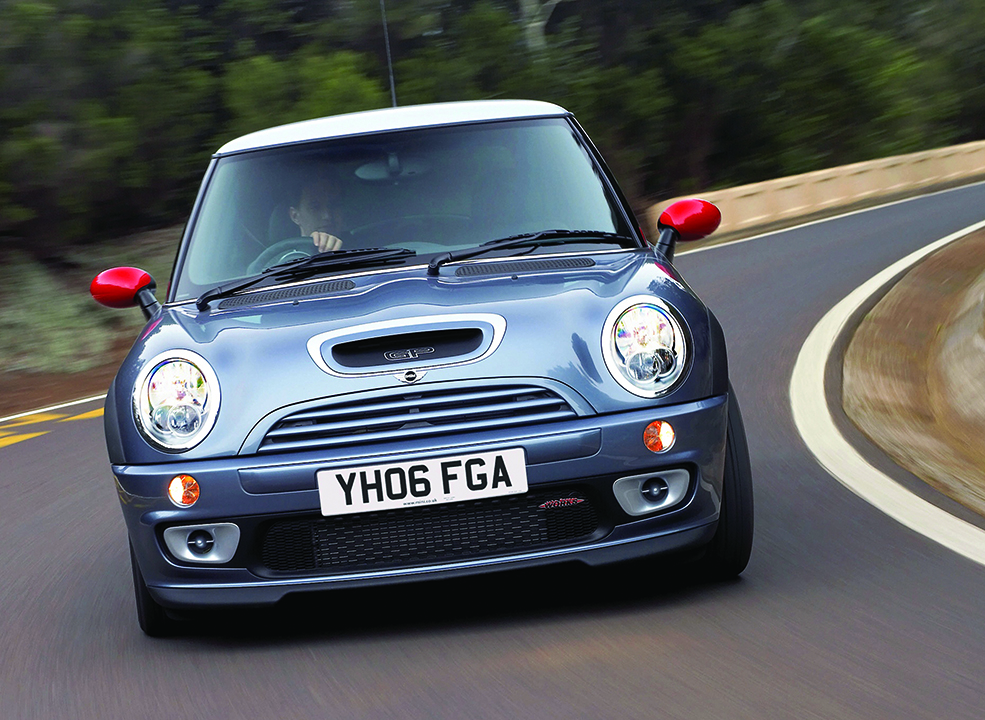
Suspension, steering and brakes
With MacPherson struts at the front and a clever ‘Z-axle’ setup at the rear, careful tuning gave the R50 MINI a genuinely enjoyable driving experience. But is the car you’re looking at still like that today? Age and use can dull the handling, so check the condition of the dampers and the bushes on the front control arms, anti-roll bars, and rear axle (fitting polyurethane replacements all round is well worth considering). Front strut top mounts often wear out, affecting alignment, and worn ball joints are a common issue. These can all be repaired, but keep in mind the expense of a full suspension overhaul.
We would also be cautious about poorly thought-out modifications, as these can do more harm than good. The brakes generally need just the usual inspections for wear and corrosion. Rear calipers have a tendency to stick on cars that haven’t been used much, and it’s wise to check that the ABS and traction control systems work properly, with no warning lights showing. For the steering, watch out for fluid leaks and whining noises from the electric pump; ignoring the latter isn’t advised as it will eventually fail, so allow around £400 for a replacement.
Finally, keep an eye out for damaged or corroded wheels and worn or cheap tyres. Few R50 models still run on their original run-flat tyres, so check if a repair kit is included.
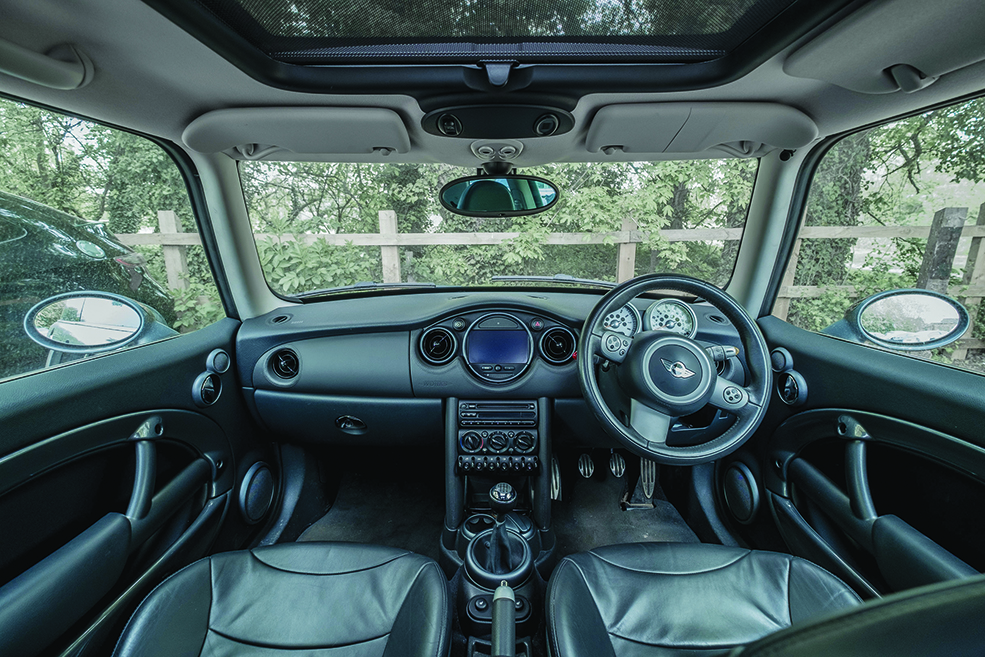
Interior and trim
Early R50 MINIs are especially known for electrical faults, so ensure all systems are functioning and keep an eye out for warning lights. Pay close attention to failing tyre pressure sensors, which can trigger the ABS and traction control lights and will cause an MOT failure. Some cars may also display airbag warnings, so be cautious of that as well.
Check that the electric windows and central locking both operate correctly. If the car has air-conditioning, make sure it blows cold air; if not, it might just need a simple re-gas, or the pump could be on the way out. A damp carpet at the front is a sign of trouble, as it can damage the ECU and body control module (known as the BC1 unit) located beneath it.
For Convertible models, test the hood thoroughly, as electrical faults can be expensive to diagnose and fix. The same applies to models with panoramic glass sunroofs – check it opens and closes properly. Many suffer from rattles, so consider yourself fortunate if yours is quiet.
The power steering pump whining may be typical of first-generation MINIs, but it’s a known weak spot. While driving, ensure it works smoothly and listen for unusual noises when stationary. Also inspect for any fluid leaks.
Expect some wear on the side bolsters of the front seats, especially on sportier versions. Make sure the seats fold back easily, as early models sometimes lock forward. Many MINIs are now being stripped for parts, so replacement trim is often affordable. Interior plastics tend to show scuffing at this age – they look better quality than they really are. A few rattles are also quite normal, especially on the earlier examples.
MINI (R50): our verdict
The first-generation MINI is now widely recognised as a modern classic and has become a more common sight at Mini gatherings, as the rivalry between the classic and modern Mini communities has eased. With prices starting at under £1000, the MINI offers exceptional value for a premium small car. Despite being over twenty years old, the MINI has aged gracefully, especially compared to the larger, heavier models of today, and it feels more solidly built than many of its contemporaries. It is also great fun to drive, particularly in Cooper S guise.
With many cars being used for spares, finding replacement parts should not be difficult, and there is a strong aftermarket network of specialists supporting these cars. Purchase a good example and you’ll enjoy plenty of fun without spending a great deal.




